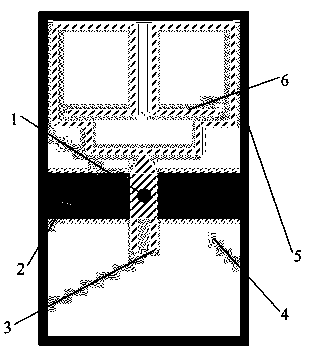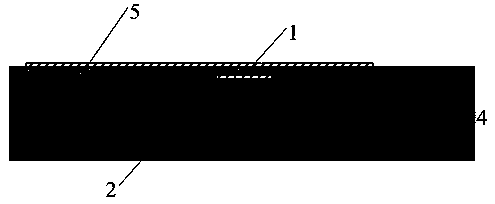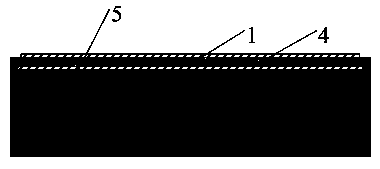RFID (radio-frequency identification) reader-writer shell integrated antenna
A technology for readers and antennas, which is applied in the direction of antenna support/installation device, instrument, radiation element structure, etc., to achieve simple structure and remarkable effect
- Summary
- Abstract
- Description
- Claims
- Application Information
AI Technical Summary
Problems solved by technology
Method used
Image
Examples
Embodiment Construction
[0023] In the embodiment of the present invention, taking a reader-writer with a size of 90mm×56mm×15mm as an example, the antenna radiator is made on the casing of the reader-writer, and the antenna is designed on the upper surface of the casing with a size of 90mm×56mm, which can maximize the utilization of The size of the reader does not need to be reduced, and the gain reduction caused by the reduction of the antenna size can be avoided; there is no object covering the antenna radiator, and it can directly contact the tag, and its performance is close to that of an external antenna. It will not increase the volume of the reader; the radiator part of the designed antenna adopts a double helix structure, and the magnetic induction sensitivity is improved by increasing the number of turns of the microstrip line, which can increase the charging speed of the tag capacitor, thereby reducing the reading and writing time.
[0024] The specific embodiment of the present invention is...
PUM
 Login to View More
Login to View More Abstract
Description
Claims
Application Information
 Login to View More
Login to View More - R&D
- Intellectual Property
- Life Sciences
- Materials
- Tech Scout
- Unparalleled Data Quality
- Higher Quality Content
- 60% Fewer Hallucinations
Browse by: Latest US Patents, China's latest patents, Technical Efficacy Thesaurus, Application Domain, Technology Topic, Popular Technical Reports.
© 2025 PatSnap. All rights reserved.Legal|Privacy policy|Modern Slavery Act Transparency Statement|Sitemap|About US| Contact US: help@patsnap.com



